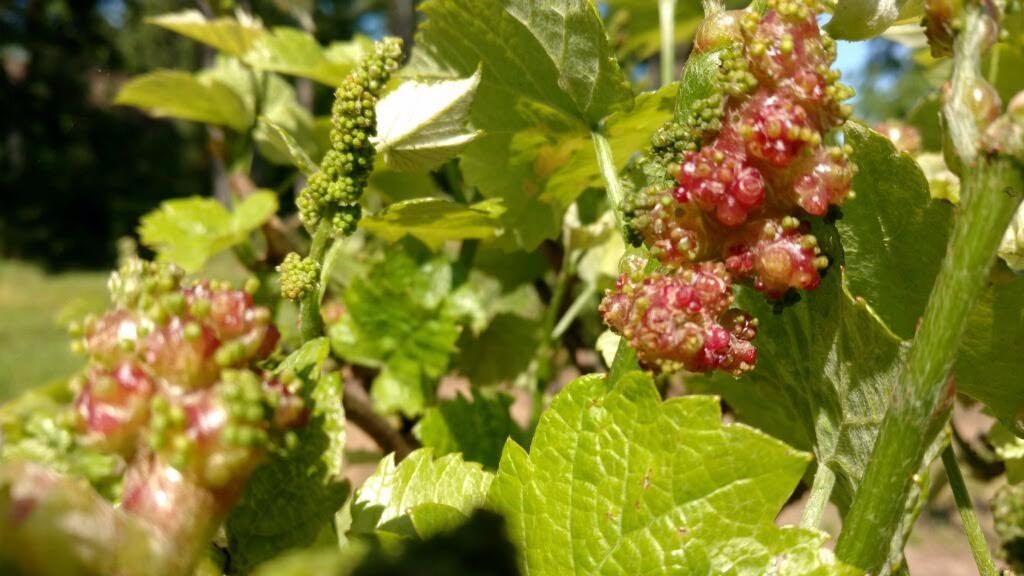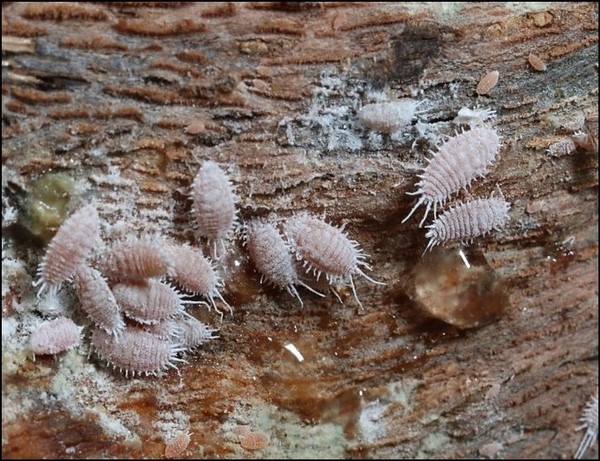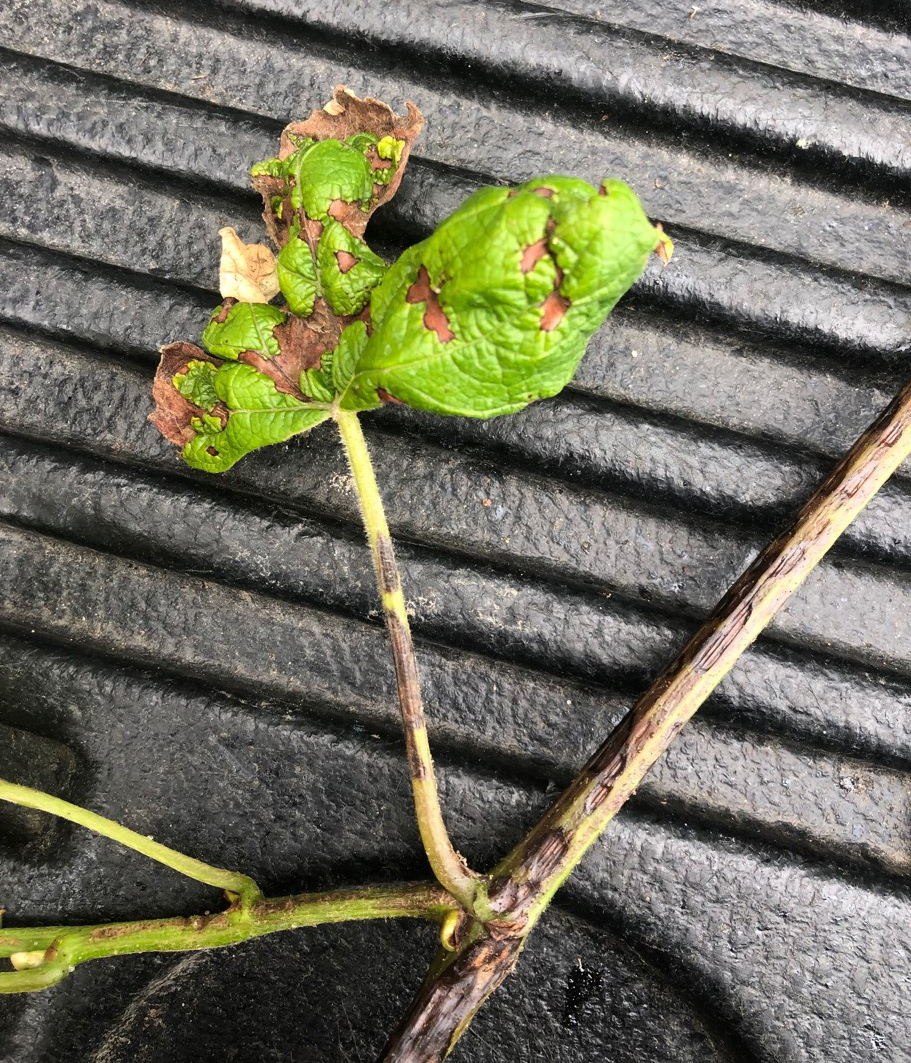MSU vineyard IPM scouting report – June 19, 2019
Insect and disease issues are becoming more apparent in Michigan vineyards as the season progresses.

This is the second IPM scouting report that we are sending out for 2019 based on visits to multiple juice and wine grape vineyards. This report will be available every other Wednesday throughout the growing season.
Insect report
In Berrien and Van Buren counties, most juice grapes are starting to bloom, with wine varieties not far behind. Grape berry moths have been found in monitoring traps, and we are now starting to see wild grape bloom to set biofix for the model that guides timing of sprays. Michigan State University Extension staff have been looking for this phenological marker and saw wild grape bloom on May 31 in Berrien County, on June 1 in Van Buren County and trace wild grape bloom in Fennville, Michigan, on June 4. We will continue to monitor this throughout the state to have solid biofix dates for each region. Use the MSU Enviroweather grape berry moth model to determine predicted control dates for second generation grape berry moth on your farm based on the wild grape bloom dates.
There was also some evidence of feeding on leaves by grape flea beetle and rose chafers. Adult flea beetles are no longer active; however, growers should be on the lookout for the larvae. These are small and dark brown/black, and they feed by scraping off the surface of leaves. Adult rose chafer emergence has been recorded in Berrien County, and low levels of leaf damage have been observed. A sap-feeding bug was also found in Berrien county and was seen feeding on some clusters.

Damage from grape tumid gallmaker has been observed in vineyards at higher levels than most years. Similar to phylloxera, grape tumid gallmaker larvae feed on leaf tissue, which responds by forming a protective gall around it. Grape tumid gallmaker poses a different threat, however, because it can affect and damage rachises and fruit. There is no threshold established, as most growers tolerate low levels of damage. However, 50% or more leaves can be affected in some vineyards when pressure is unusually high. Thorough scouting should be done before assuming this insect is a real problem pest. Keep an eye out for these insects and remove them by hand if found (Photos 1-2). The rapidly expanding shoots typically grow out of this damage during the shoot expansion phase of vine growth.

A mealybug adult was found on one vine in Berrien County. Mealybugs are most commonly found in the crevices of the wood or on berries near the trunk. Ants are often associated with mealybugs, so if you see many ants on a vine it may be an indication of a mealybug infestation. This can be confirmed by peeling back some bark off the trunk of the vine to see if these small mealybugs are present (Photo 3). Damage from these bugs occurs when honeydew produced by the feeding insects drops onto nearby leaves and fruit. The honeydew acts as a substrate for sooty molds that can spoil fruit quality. They can also aid in the spread of grapevine leafroll virus.
In northwestern Michigan, increased activity of grape erineum mite was observed on Old Mission. This is particularly concerning because the leaf damage is located on shoots that are already behind in development (slow growth due to low temps this spring), which may make recovery from leaf damage more slowly than vines with normal growth. Wild grape bloomed as of June 18, and this biofix date will be used to guide timing of management for grape berry moth in the region. The northwest region has also seen early and light leaf damage from grape tumid gall maker.
Disease report

Several diseases were noted in southwest Michigan during our scouting on June 17 and 18. Due to our wet weather, many of the diseases we don’t typically see are starting to appear within vineyards. In Lawton, Michigan, juice grapes had some sporadic anthracnose damage on shoots. Anthracnose is caused by a fungus called Elsinoe ampelina (Photo 4) and appears on shoots as roughly oval spots that are sunken and purplish-brown and raised edges. Little is known about controlling this disease other than utilizing clean plant material and that certain cultivars are more susceptible than others. From a fungicide perspective, FRAC 11 fungicides (i.e., Abound and Sovran) have been found to be the most effective.
Also, blossom blight was noted in fields. These blossoms appeared as dead/dark tissue within opening clusters at the immediate prebloom stage in several fields in Benton Harbor, Michigan, and Lawton, Michigan. Upon incubation, several fungi grew out of this tissue, but it wasn’t possible to tell whether these were the causal organisms of the blight or the blossoms died earlier (due to other factors) and were then colonized by fungi.

Downy mildew was also observed in Lawton on Niagara grapes for the first time this season (Photo 5); it was identified on June 17. This is significantly earlier than noted in previous years. Downy mildew is a major disease in the eastern United States and affects both juice and wine grapes and can defoliate a plant completely. Depending on the incubation period and leaf age, lesions are yellow to reddish and brown and limited by the veins. Sporulation of the fungus appears as dense, white, cottony growth in the lesions. Most importantly downy mildew is controlled by a very different set of fungicides than the rest of the fungal diseases because it is caused by a fungal-like organism known as Plasmopara viticola
P. viticola overwinters in infected leaves on the ground and possibly in diseased shoots. This pathogen uses swimming zoospores to move around on the surfaces of a plant during rainy periods. Following an infection event, it typically takes seven-to-12 days for the infection to become visible. During periods of high humidity and temperatures above 55 degrees Fahrenheit, P. viticola grows out of infected tissue and produces microscopic, tree-like structures with sporangia on the lower leaf surface. This makes the infection look white and cottony. Downy mildew growth and these sporangia cause additional secondary infections and are spread by rain.
Any practice that speeds the drying time of leaves and fruit will reduce the potential for infection. Since this has been an extremely wet, cool year, be vigilant by applying preventative fungicides throughout the season. The most effective fungicides are FRAC 40 (i.e., Revus, and Forum), FRAC 4 (Ridomil) and FRAC 21 (i.e,. Ranman), but other fungicides like FRAC 11 and FRAC 33 have shown good efficacy under low disease pressure scenarios.
For certain fungicides, precaution is advised on Concord grapes, as adjuvants or other components in the tank-mix may increase phytotoxicity potential (this has been particularly noted for fungicides like Revus Top). The risk of phytotoxicity may be enhanced during rapid plant growth and high temperatures.
This report and associated scouting is funded by a Michigan Craft Beverage Council grant and by MSU’s Project GREEEN. For more on MSU’s grape IPM information, visit MSU Extension’s Grape Pest Management page.



 Print
Print Email
Email









